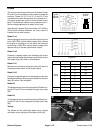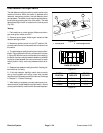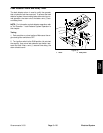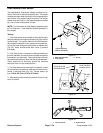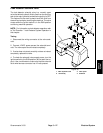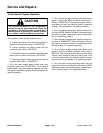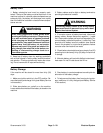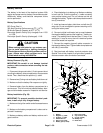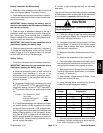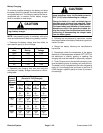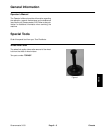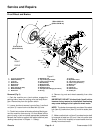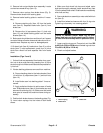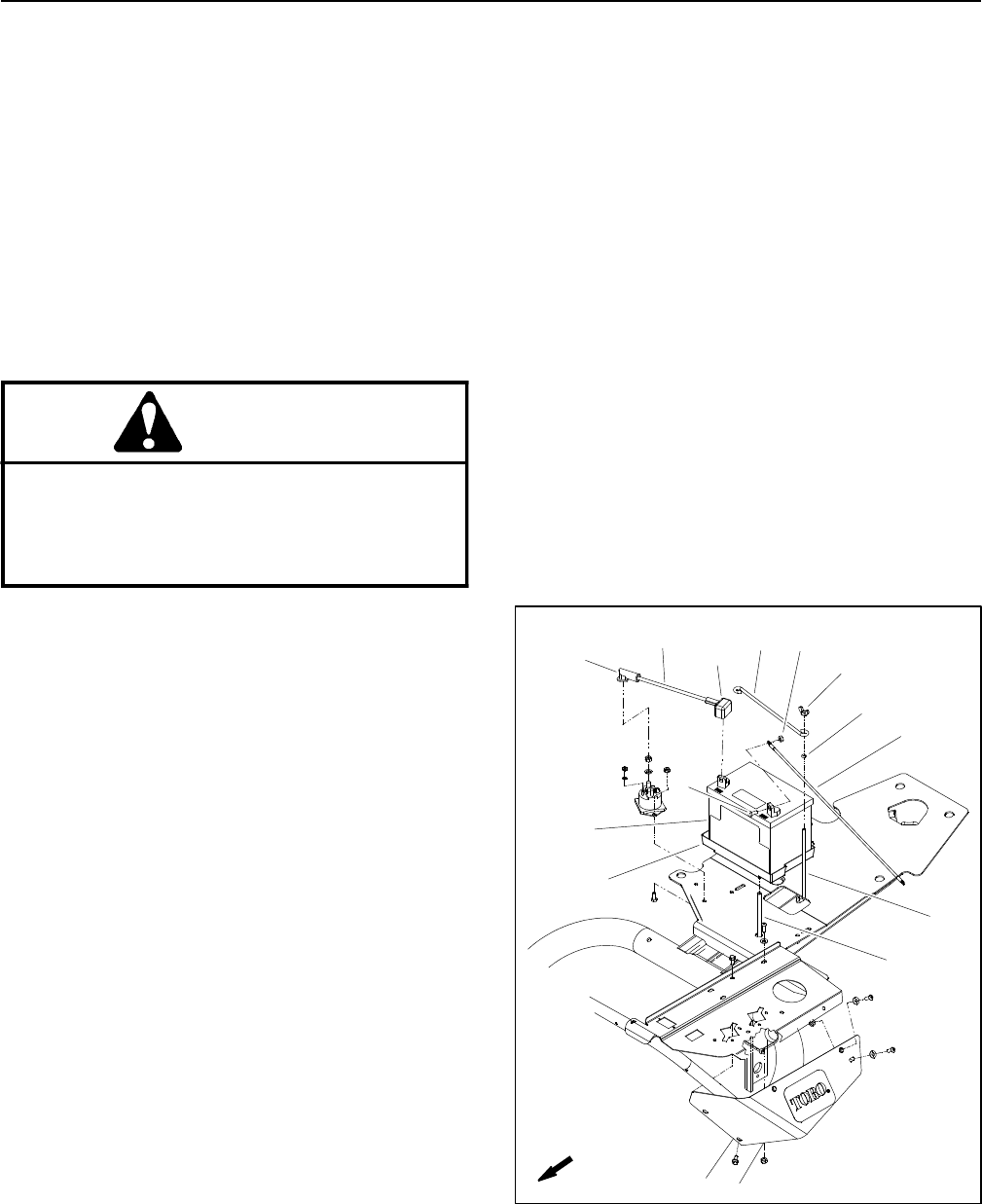
Greensmaster 3150Page 5 -- 30Electrical System
Battery Service
The battery is the heart of the electrical system. With
regular and proper service, battery life can be extended.
Additionally, battery and electrical component failure
can be prevented.
Battery Specifications
BCI Group Size U1
300 Amp Cranking Performance at 0
o
F(--18
o
C)
28 Minute Reserve Capacity at 80
o
F(27
o
C)
Electrolyte Specific Gravity (fully charged): from 1.250
to 1.280
Electrolyte Specific Gravity (discharged): 1 .240
CAUTION
When working with batteries, use extreme cau-
tion to avoid splashing or spilling electrolyte.
Electrolyte can destroy clothing and burn skin or
eyes. Always wear safety goggles and a face
shield when working with batteries.
Battery Removal (Fig. 36)
IMPORTANT: Be careful to not damage terminal
posts or cable connectors when removing the bat-
tery cables.
1. Disconnect the ground cable (--) first to prevent short
circuiting the battery,other components or the operators
hands. Then, disconnect the positive (+) cable.
2. Removetwo (2) wing nuts and battery hold down rod.
3. Make sure that the battery filler caps are on tightly.
4. Remove battery from the battery compartment to a
service area. This will minimize possible battery dam-
age and allow better access for inspection and service.
Battery Installation (Fig. 36)
IMPORTANT: To prevent possible electrical prob-
lems, install only a fully charged battery.
1. Make sure the ignition s witch and all accessories are
off.
2. Make sure the battery compartment is clean and re-
painted if necessary.
3. Make sure battery cables and battery retainer are in
good condition.
4. Place the battery into battery tray. Make sure battery
is level and flat. Push the positive (+) cable connector
onto positive battery post. Do not hammer as this will
damage the battery. Tighten cable clamp fasteners with
two (2) wrenches.
5. Install and secure battery hold down rod with two (2)
wing nuts. Do not overtighten to prevent crac king or dis-
torting the battery case.
6. Connect a digital multimeter (set to amps) between
the negative battery post and the negative (--) cable con-
nector. The reading should be less than 0.1 amp. If the
reading is 0.1 amp or more, the unit’s electrical system
should be tested and repaired.
7. Connect the negative (ground) cable connector to
the negative battery post. Tighten cableclamp fasteners
with two (2) wrenches.
8. Coat terminals with battery terminal protector (see
Special Tools in this chapter) or a light coat of grease to
reduce corrosion after connections are made.
Figure 36
1. Battery
2. Negative (--) cable
3. Positive (+) cable
4. Hold down rod
5. Wing nut (2 used)
6. Battery post (2 used)
7. Hex nut (2 used)
8. Cap screw (2 used)
9. O--ring (2 used)
10. Battery tray
11. Drain tube
1
2
3
4
5
6
7
8
9
10
11
12
13
FRONT



